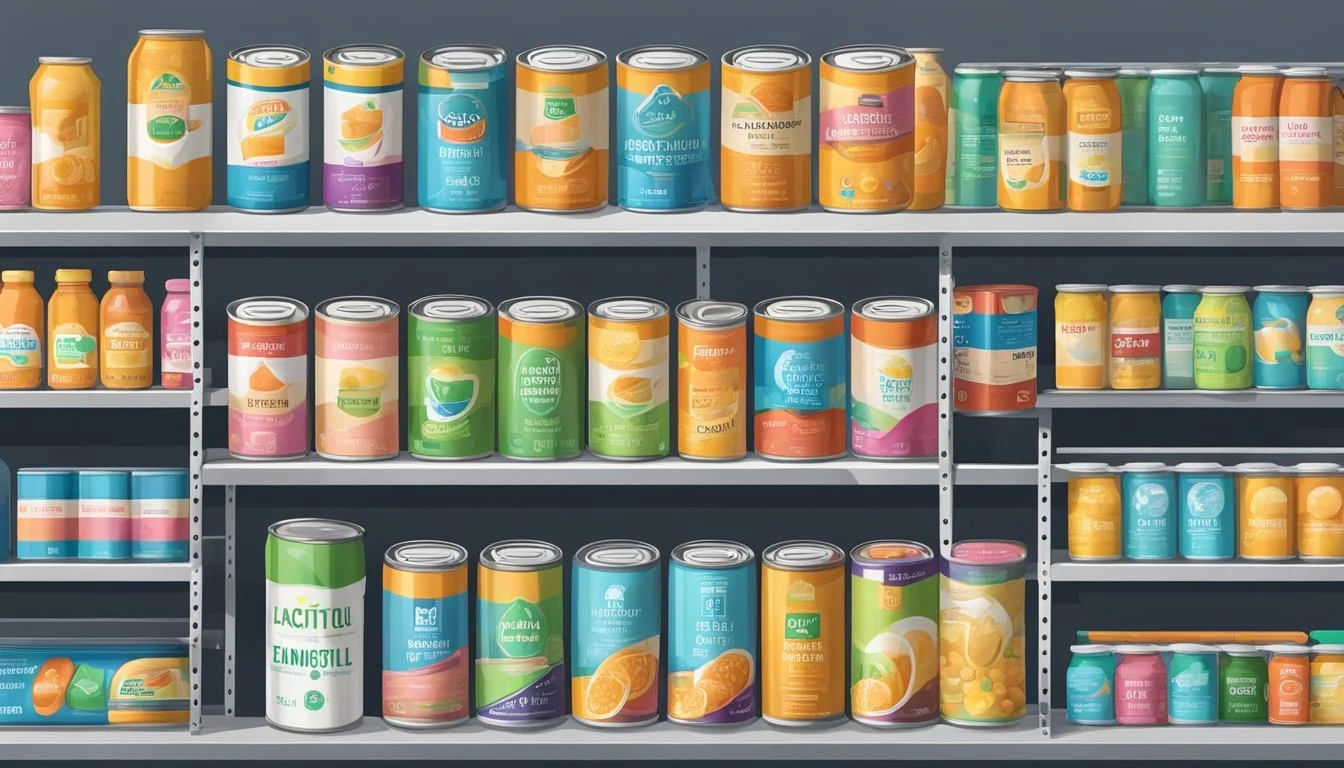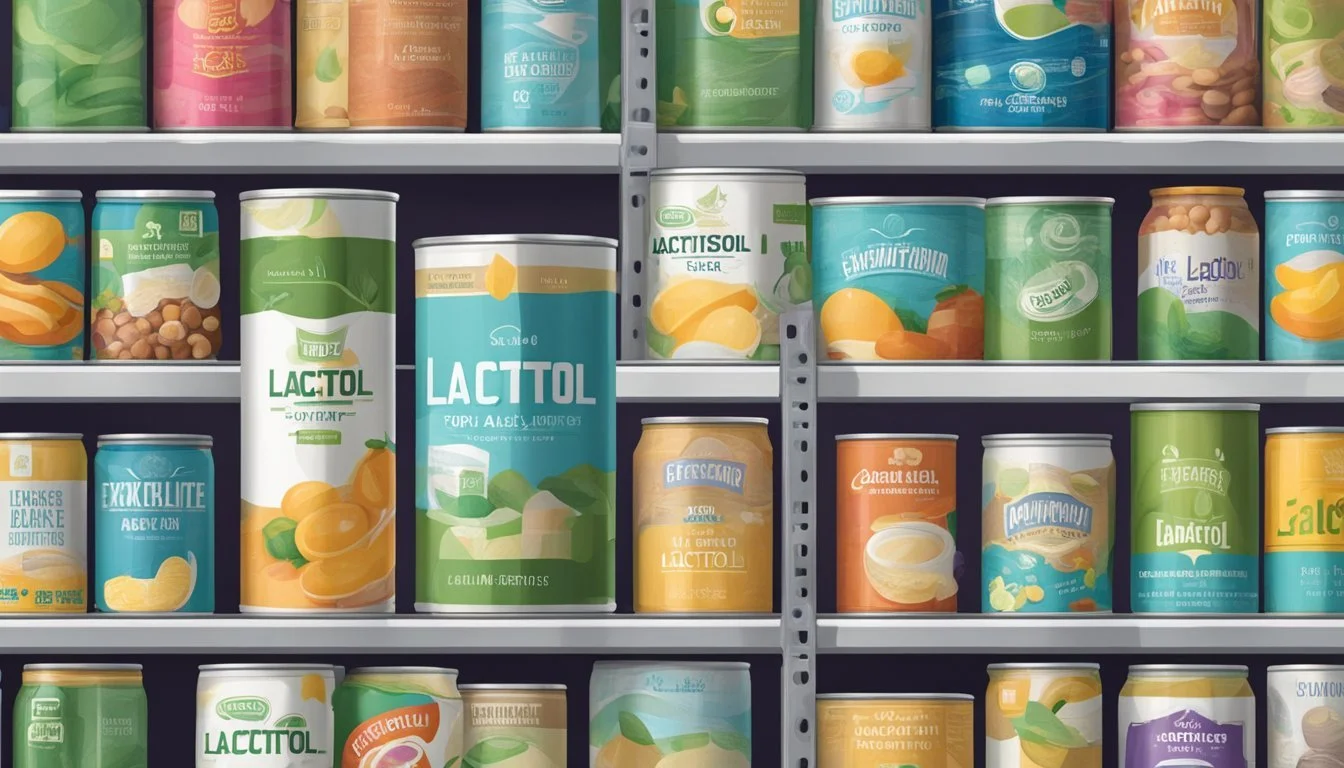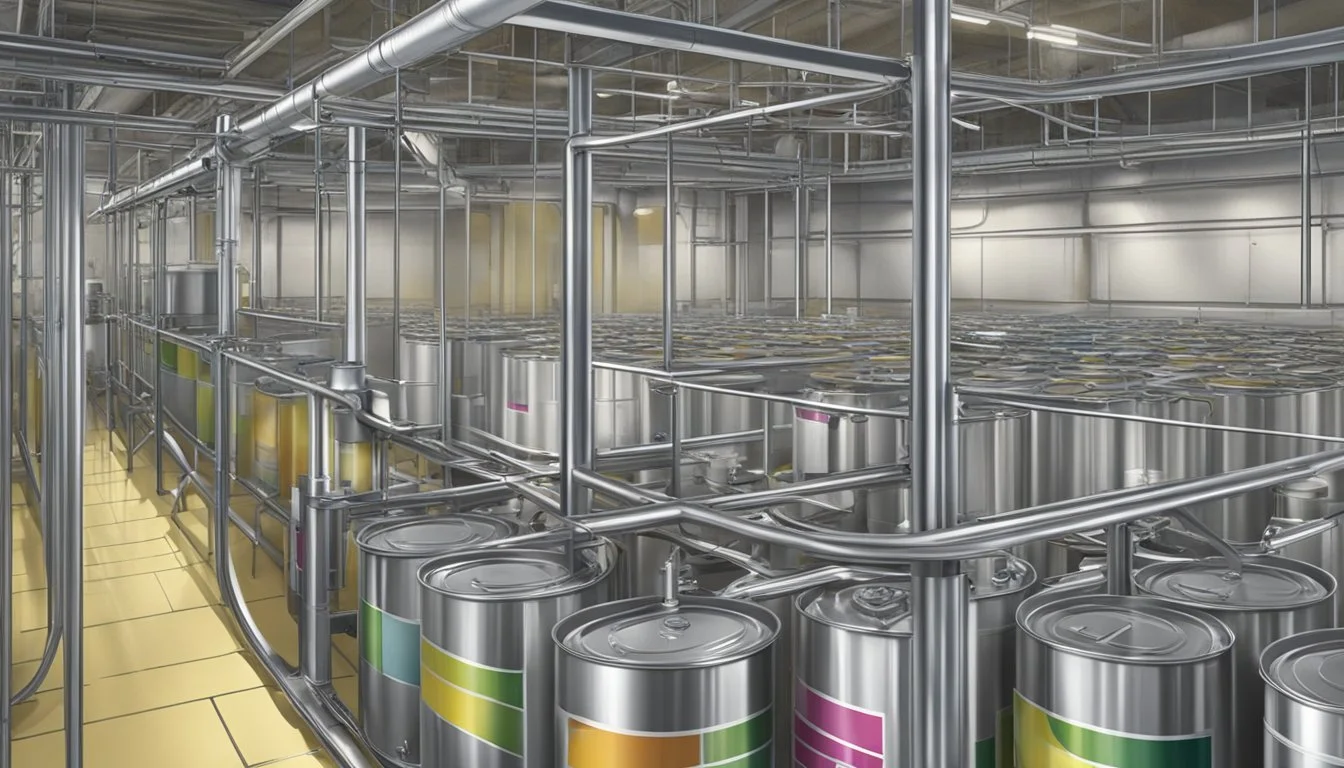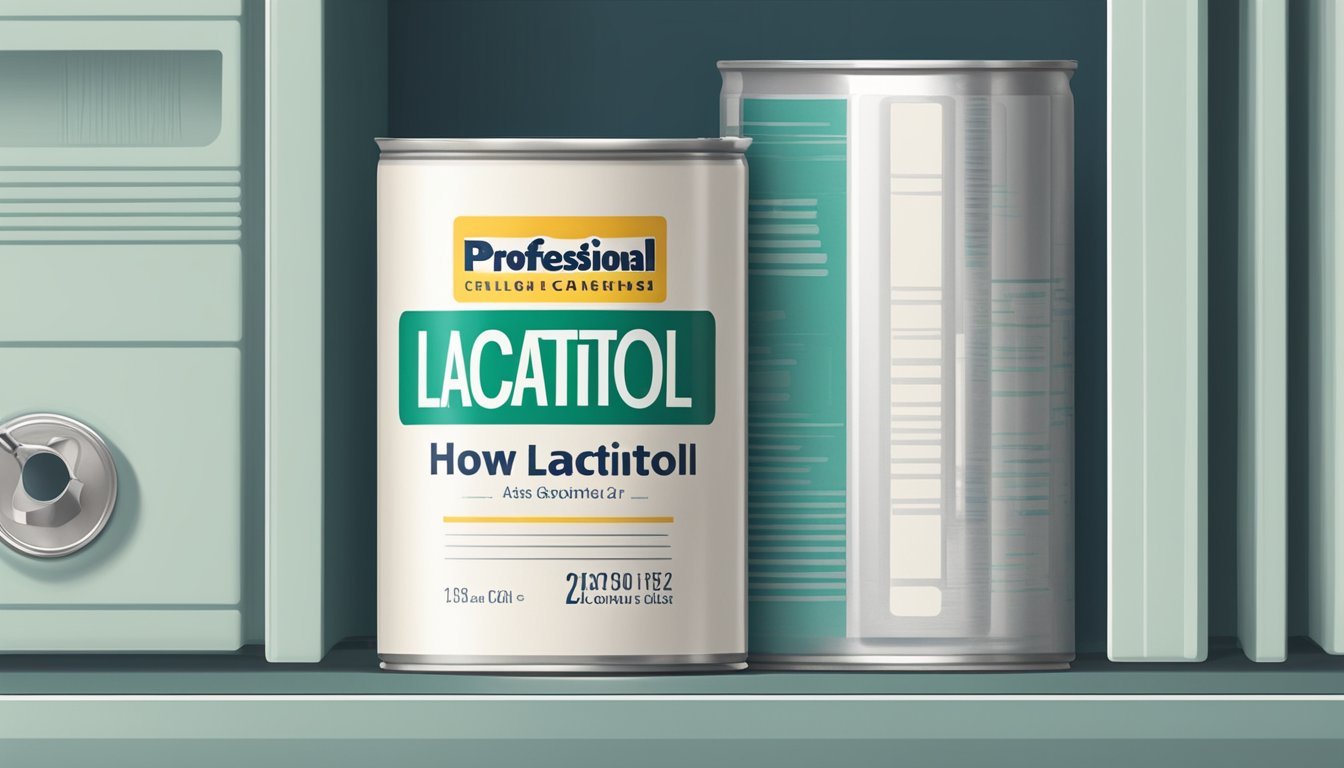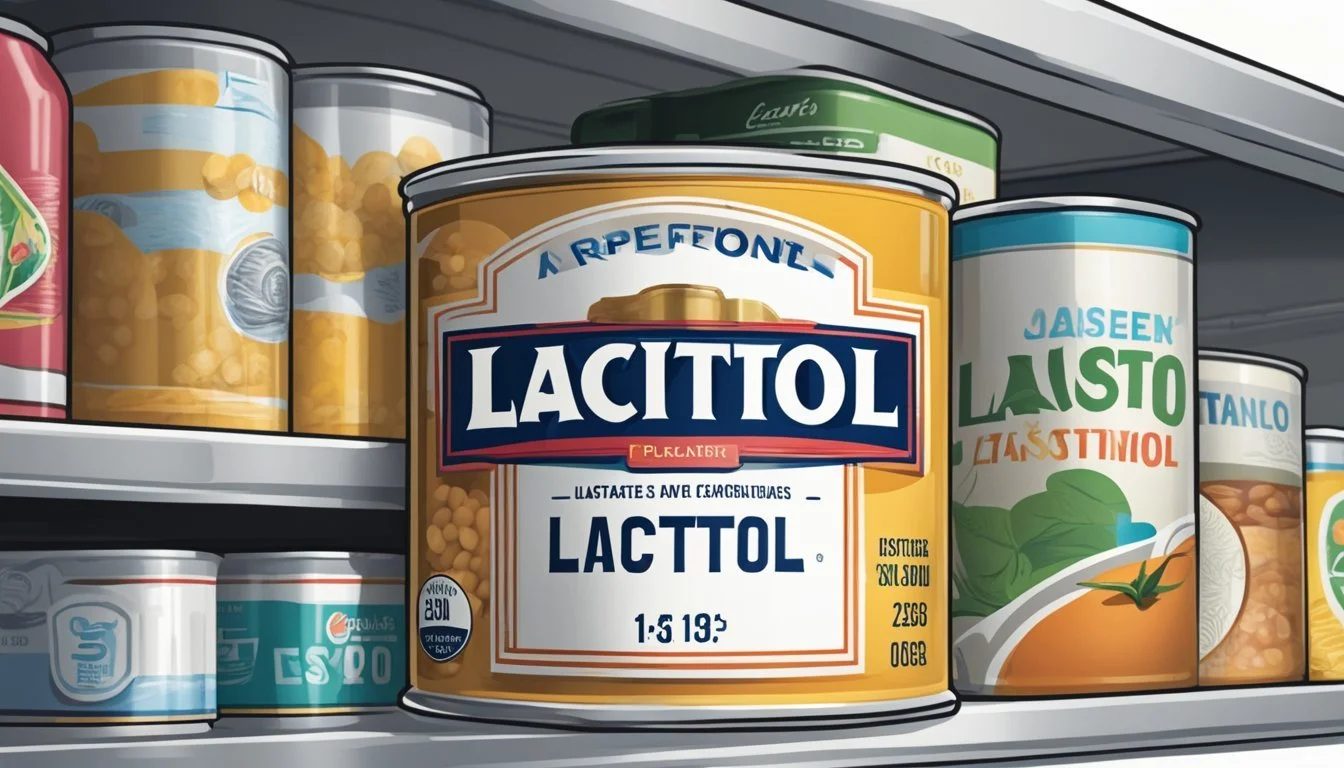How Long Does Canned Lactitol Last?
Shelf Life and Storage Tips
When discussing the shelf-life of canned foods, understanding the balance between safety and quality is essential. Lactitol, a sugar alcohol used as a sweetener in many processed foods, is no exception. Canned products containing lactitol are designed to last for an extended period while retaining their safety for consumption. However, factors such as the canning process, the acidity of the contents, storage conditions, and the integrity of the can's seal all play a crucial role in determining the overall shelf-life of these products.
Safety is a paramount concern with canned goods, and lactitol-containing products are subject to the same standards as other canned foods. The absence of oxygen inside the sealed can prevents the growth of aerobic bacteria, yeasts, and molds, thereby decreasing the risk of spoilage. The canning process, which typically involves high heat to kill harmful microorganisms, further ensures that canned goods remain safe to consume for a long time. Nevertheless, it is vital to inspect cans for signs of damage or botulinum toxin, as these indicate spoilage regardless of the printed date.
In terms of quality, while canned foods can be safe to consume well beyond their "best by" dates, the quality may start to deteriorate after a certain period. This degradation in quality can affect the taste, color, and texture of the food, including those sweetened with lactitol. Consumers should note that while the sweetener itself does not significantly change over time, the overall sensory attributes of the canned product may alter, influencing the enjoyment of the food. It is important to store canned goods in a cool, dark place to optimize their longevity and maintain their quality.
Understanding Canned Lactitol
Lactitol, a sugar alcohol derived from lactose, serves as a low-calorie sweetener in various food products. Once canned, its shelf life and nutritional value depend on the canning process and how it's preserved.
Composition and Nutritional Value
Lactitol is notable for its reduced caloric content, offering half the calories of traditional sucrose. It provides a sweetness level that is approximately 40% that of sugar, making it a suitable sweetening alternative in canned goods. As a sugar alcohol, lactitol has the following nutritional attributes:
Calories: About 2 calories per gram
Sweetness: Roughly 40% as sweet as sucrose
Nutrient Contribution: Minimal; not a significant source of vitamins or minerals
Despite its lower sweetness, consumers often use lactitol for its bulk and texture similarities to sugar, without a significant impact on blood sugar levels. This makes it especially appealing in the context of convenience and dietary management.
Canning Process and Preservation
The canning process involves sealing the lactitol in a sterile container and subjecting it to high temperatures to eliminate pathogens and extend shelf life. The sealed environment within a can offers multiple advantages:
Protection from Contamination: Once sealed, the contents are safeguarded against external contaminants.
Longevity: Canning provides a stable environment that can prolong the shelf life of lactitol.
While canned foods can last indefinitely in terms of safety, the best quality and flavor are often enjoyed when consumed within the first year. Since lactitol itself does not spoil, it remains stable within the canned environment, especially if the can remains uncompromised and is stored in a cool, dry place. The quality and nutritive value, while generally long-lasting, may decline over an extended period. It is recommended to use canned lactitol while it retains optimal sensory qualities.
Safety and Quality Measures
When considering the longevity of canned lactitol, understanding the specific safety and quality measures is crucial. They ensure the product remains safe for consumption and retains its intended quality over time.
Identifying Spoilage
Spoilage can be detected in canned lactitol by observing any changes in color, odor, or texture. A bulging can, for instance, often indicates the presence of gas from bacteria, which could include harmful Clostridium botulinum. Consumers should discard any cans that show signs of damage or leaking, as they compromise the vacuum seal and safety of the contents.
Risks of Contamination
Canned lactitol is typically safe from bacteria and botulism due to the sterilization process during canning. However, if the seal is compromised or the can is improperly processed, it increases the risk of food poisoning. Clostridium botulinum is of particular concern as it thrives in low-oxygen environments and produces toxins that are dangerous if ingested.
Best Practices for Storage
To optimize safety and quality, canned lactitol should be stored in a cool, dry place, away from direct sunlight and heat sources. Storage temperatures should be maintained between 20°C and 25°C (68°F and 77°F). It is important to adhere to the "use-by" or "best-by" dates provided by manufacturers as they are indicators of the product's peak quality. After these dates, the quality may start to decline, though the product can still be safe if the can remains sealed and undamaged.
Determining Shelf Life
The shelf life of canned lactitol is dictated by a combination of labeling practices, storage conditions, and the product's sensory attributes, which provide cues on its freshness and quality.
Labeling and Expiration Dates
Manufacturers label canned goods with expiration dates or best-by dates to suggest when the product is expected to remain at peak quality. In the case of canned lactitol, a sugar alcohol used as a sweetener, the labeling should indicate a best-by date as a guideline for optimal freshness.
Factors Affecting Shelf Life
Several factors contribute to the longevity of canned lactitol. It is typically a low-acid product, meaning its shelf life can be more extended than high-acid foods like fruits and tomatoes but less than extremely acidic items. The storage conditions significantly affect the shelf life—canned lactitol should be kept in a cool, dark place to maintain its quality.
Temperature: Storing cans in an environment that's consistently below 75°F (24°C) prolongs the product's life.
Light: Exposure to light can degrade lactitol quality over time.
Humidity: Excessive moisture may compromise can integrity and lead to quality issues.
Visual and Sensory Indicators
The quality of canned lactitol can also be determined through visual and sensory indicators. If the can shows signs of damage, such as bulging, leaking, or rusting, this might indicate a quality issue. Furthermore, any off-odors or noticeable change in color or texture can suggest that the product is no longer at its best quality, regardless of the indicated expiration date.
Proper Storage Conditions
The longevity of lactitol, and any canned good, is significantly influenced by the conditions in which it is stored. Ensuring that canned lactitol is kept in the right environment can prolong its shelf-stable life.
Home Storage Guidelines
For home storage, a pantry is often the ideal location for canned goods. The pantry should be dry, relatively cool, and away from direct sunlight which can induce oxidation and spoilage. Shelves should be clean and free from contaminants.
Inspect Canned Goods: Regularly check cans for signs of damage. Cans that are rusted, dented, or showing signs of rust should be discarded, as this indicates potential compromise of the can's integrity.
Organization: Arrange lactitol in a manner that older stock is used first.
Handling: Handle canned lactitol with care to avoid denting.
Temperature Impact on Stability
Temperature plays a crucial role in the stability and longevity of canned lactitol.
Ideal Temperature Range: The storage area should be kept at a stable temperature, ideally between 50°F and 70°F (10°C to 21°C).
Avoid Extreme Temperatures: Store lactitol away from places where temperatures fluctuate significantly, such as un-insulated attics, garages, or near furnaces. Extreme temperatures can hasten spoilage.
By maintaining a consistent, moderate temperature and inspecting cans for integrity, consumers can ensure their canned lactitol remains in good condition for as long as possible.
Health Implications
When considering the health implications of canned lactitol, it is important to understand the effects of potential spoilage as well as the nutritional considerations associated with consuming this sugar alcohol.
Effects of Spoiled Canned Foods
Spoiled canned foods can pose serious health risks. If canned lactitol is not stored properly or is kept beyond its expiration date, it may harbor bacteria that can lead to foodborne illnesses. One of the most dangerous bacteria related to spoiled canned goods is Clostridium botulinum, which produces a potent botulism toxin that can be lethal. Symptoms of botulism can include muscle paralysis and respiratory failure. Other bacteria that can proliferate in spoiled canned foods include Salmonella and E. coli, which can cause gastrointestinal distress and other severe health issues.
Nutritional Considerations
The nutritional value of canned lactitol might change over time. As canned foods age, certain vitamins, like vitamin C, can degrade, which reduces their nutritional benefits. However, due to lactitol’s chemical stability, the sweetener's caloric value remains largely unaffected. Canned lactitol is a sugar alcohol and is often used as a low-calorie alternative to sugar. It may also play a role in food preservation by inhibiting the growth of spoilage bacteria, although this does not prevent all forms of food spoilage.
It's important to note that while lactitol itself is not a drug, it has several medicinal uses, including acting as a laxative. Individuals with specific health conditions or those on medication should consult healthcare professionals regarding the use of lactitol, as it can interact with certain drugs. There is no evidence to suggest that lactitol in canned foods is associated with lead contamination, which is a concern with some forms of food packaging.
In summary, consumers should store canned lactitol properly and adhere to expiration dates to avoid the risks associated with food spoilage and to maintain its nutritional quality.
Canned Lactitol in Food Preparation
Canned lactitol offers a versatile sweetener option for various recipes where sugar reduction is desired without compromising on taste or texture.
Incorporating into Recipes
Canned lactitol can be integrated into a wide spectrum of culinary applications, from soups and stews to meat-focused dishes and even pickles. Due to its stability in high heat, lactitol works well in both stovetop cooking and baking. In recipes, chefs typically substitute it for sugar using a 1:1 ratio. When using in sauerkraut or other fermented vegetables, its non-digestibility helps to maintain the desired crispness without adding calories.
Taste and Texture Considerations
Lactitol exhibits a taste profile similar to sugar but is slightly less sweet and provides a very mild cooling sensation on the tongue. It's important to note that in foods like tuna or canned meat, where a delicate balance of flavor is key, lactitol should be used judiciously to prevent oversweetening. In terms of texture, lactitol can impart a smooth, creamy property to soups and stews while enhancing color and gloss to sauces and glazes. When incorporated into canned goods, it does not significantly alter the shelf life, which is comparable to that of other sweeteners when stored properly.
Consumer Advice
When purchasing and storing canned lactitol, consumers should be aware of best practices for safety and quality. Adherence to buying tips and understanding when to dispose of canned goods ensures that consumers enjoy the convenience of canned lactitol without compromising their well-being.
Buying Tips
Check Expiration Dates: While canned products can last beyond their printed dates, it's important to note the expiration date at the time of purchase.
Inspect Cans: Choose cans that are free from dents, rust, or swelling. Damaged cans may indicate compromised integrity.
Look for Reputable Brands: Trusted brands like Ball often adhere strictly to safety guidelines set by the USDA and FDA.
When to Dispose of Canned Lactitol
Expiration Date: If a can of lactitol is past its expiration date, assess its condition. Although not a definitive indicator of safety, the quality may be affected.
Can Integrity: Dispose of any cans that are leaking, bulging, or show signs of damage.
Storage Conditions: Canned goods should not be stored in places where temperatures exceed 95°F, as recommended by food safety experts.
Consumers should rely on both visual inspections and official recommendations to determine the safety and quality of their canned lactitol.
Regulatory Standards
The longevity of canned lactitol, like any other canned product, is governed by strict regulatory standards to ensure safety and quality. These regulations are crucial for consumer safety and are put forth by government agencies such as the USDA and FDA.
Government Guidelines for Canning
The United States Department of Agriculture (USDA) provides comprehensive guidelines on home canning and the expected shelf life of canned foods. Canning preserves lactitol and other foods through a process that seals them in airtight containers, and USDA standards are designed to reduce the risk of foodborne illnesses and to prolong shelf life. Home-canned lactitol, for instance, must be pressure-canned according to USDA guidelines to ensure safety and quality.
Food Safety Certifications
Attaining food safety certifications is an essential measure for producers of canned goods. The Food and Drug Administration (FDA) certifies the canning of specific food items, including lactitol, by setting out Good Manufacturing Practices (GMPs) and guidance documents. These certifications and practices help ensure that the canned lactitol is safe for consumption and meets the regulation standards. The FDA's role is to guarantee that lactitol, once canned, retains its safety over time when stored under proper conditions.



